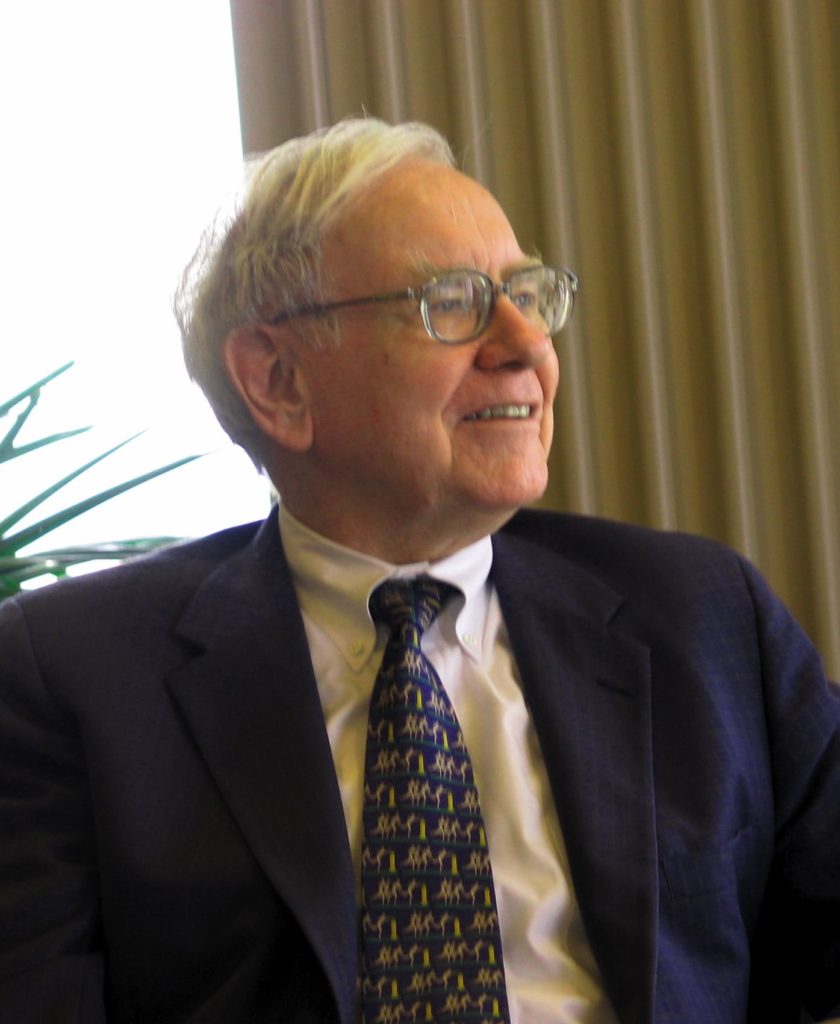Managing Other People's Money
Thoughts to Keep in Mind When Acting in a Fiduciary Capacity
"There are three connected realities that cause investing success to breed failure: First, a good record quickly attracts a torrent of money. Second, huge sums invariably act as an anchor on investment performance; what is easy with millions, struggles with billions. Third, most managers will nevertheless seek new money because of their personal equation - namely, the more funds they have under management, the more their fees."
— Warren Buffet, 2016 Berkshire Hathaway Annual Report

Warren Buffet; can he achieve better-than-mean return performance with his cash trove? (Photo by Mark Hirschey - Work of Mark Hirschey, CC BY-SA 2.0, https://commons.wikimedia.org/w/index.php?curid=2581999)
Warren Buffet, the Oracle of Omaha, once friend of Paul Samuelson, is a strong supporter of Jack Bogle's approach and Vanguard's passive vehicle investment fund offerings for the average individual investor. In fact, Warren Buffet and Jack Bogle have written prefaces for each other's literary efforts during the past forty years.
Today, Buffet is faced with the very embarrassment of riches he warns of above as Berkshire attempts to deploy its trove of cash generated from successful investments in the under-valued corporations he researches and constitute his holding company's assets.
Paul Samuelson, a Buffet admirer and in many ways the progenitor of the passive investment movement himself, was as well a strong proponent of Jack Bogle's approach. However, he felt that if one was fortunate enough to unearth the next Warren Buffet, Peter Lynch, or John Neff, risking some funds in the hands of such a practitioner was a justifiable adventure.
I was fortunate to have been closely associated with the prior mentioned John Neff, who in the early 1970s ran the Windsor Fund as part of the Wellington Philadelphia group, and was then, hands down, the ranking practitioner in the country of the value investing philosophy. Under John's direction, his Windsor Fund bettered its benchmark target S & P 500 Index for nearly 15 straight years1 as he built his portfolio around stocks that were "overlooked, misunderstood, forgotten, and/or out of favor," as he would often put it.
During the Wellington daily morning conference call between the Boston and Philadelphia offices, John would entertain with tales of previously unknown (to us) companies in obscure industries whose stocks were selling at attractively low price-to-earnings ratios (P/E) and often yielding premium-to-market dividends which fit his value criteria.
John was also a coach and a mentor to many before that term became fashionable, who on more than one occasion tactfully dismantled a carefully constructed investment recommendation offered by this writer at the morning meeting, always being careful to leave the door open to continued discussion.
It was due to this initial association with John, and, of course, Jack Bogle, that an early appreciation for the value approach was gained. However, the two obviously could not have been more different in the implementation of the basic value philosophy. Jack advocated "buy the market" while John was dedicated to identifying individual companies, often suggesting "you can diversify yourself into mediocrity." In Jack's mind, John's reference to "mediocrity" equated in the end with the statistical reversion to the mean that Jack felt most investors were doomed to experience over the longer term. The two both agreed to co-exist under the Wellington fiduciary stewardship tent where the investors' best interests were always paramount.
In a sense, combining a passive position (as at the core of TFC's client account portfolios) with a careful selection of active manager stock and fixed income ETFs and no-load mutual funds is the synthesis of what the pioneering Samuelson-Buffet-Bogle research concluded.
Setting Client Expectations: Mean Reversion is the Norm
Jack Bogle's adaptation of this background provides further fuel for TFC's approach. Bogle and one of his mentors, Burton Malkiel (author of A Random Walk Down Wall Street, Professor of Finance at Princeton, and past Vanguard Board Member), has always maintained that in a universe as dynamic and expansive as the global investment markets, with millions of astute as well as inexperienced participants, a goal for realistic returns should generally be the mean for the asset class, market segment, or markets combined, of course, always less fees. To a degree, reversion to the mean is what Warren Buffet articulates above in his "three connected realities." And with the Ibbotson-Sinquefield data platform to prove the assertion, it's hard to avoid the conclusion that, in many ways, we live in a mean reversion world.
____________
1 During his 31 years at Wellington, Neff's Windsor Fund beat the S & P 500 Index a total of 23 years.
Proceed to Attempting to Combine Growth and Value Approach: A Merger that Failed and Spawned the Passive Movement >
< Return to Artificial Intelligence: An Early Introduction to a Disruptive Technology
Sign The Guestbook
The author welcomes your feedback. Please sign the Guestbook to let us know of your visit to this website. There is a place to offer your suggestions, comments and/or questions.
